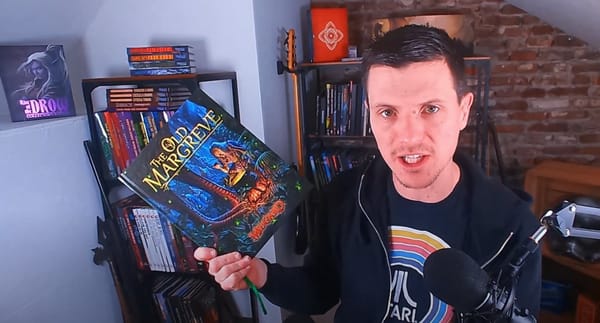The Ultimate Step-by-Step Guide to Creating and Running a Successful TTRPG Kickstarter Campaign

The tabletop roleplaying game market has flourished on Kickstarter, with projects raising millions of dollars and launching successful game studios. However, running a TTRPG Kickstarter requires specific strategies tailored to this unique audience. This comprehensive guide will walk you through every stage of creating and running a TTRPG Kickstarter campaign that stands out in a crowded marketplace.
Phase 1: Pre-Production (6-12 Months Before Launch)
Step 1: Define Your Game's Unique Value Proposition
- Identify your game's core mechanics that differentiate it from existing TTRPGs
- Articulate your game's thematic focus and what emotional experience it delivers
- Research the competition to ensure your concept offers something fresh
- Create a one-page pitch document summarizing these elements
Step 2: Build a Minimum Viable Product
- Develop your core ruleset focusing on essential mechanics
- Create a basic version of your character sheet
- Write at least one starter adventure that showcases your game's unique elements
- Produce a quickstart rules document (15-30 pages) for playtesting
Step 3: Assemble Your Creative Team
- Identify key roles needed: writers, editors, artists, layout designers, playtesters
- Determine which roles you'll fill and which require external talent
- Begin conversations with artists whose style matches your vision
- Create a team communication system (Discord, Slack, etc.)
Step 4: Conduct Initial Playtesting
- Run internal playtests with friends and colleagues
- Refine core mechanics based on initial feedback
- Document common questions that arise during play
- Prepare an external playtest packet with feedback forms
Phase 2: Community Building (3-6 Months Before Launch)
Step 5: Establish Your Online Presence
- Create dedicated social media accounts for your game/studio
- Build a simple website with your game's concept, team info, and email signup
- Set up a Discord server with channels for announcements, rules questions, etc.
- Start a dev blog or newsletter to document your design process
Step 6: Release Public Playtesting Materials
- Publish your quickstart rules on DriveThruRPG and itch.io (free or PWYW)
- Create a structured feedback form using Google Forms or similar
- Organize online playtesting sessions with interested gamers
- Join TTRPG design communities to share your work and gather feedback
Step 7: Create Showcase Content
- Record 1-2 actual play sessions (60-90 minutes each) highlighting key mechanics
- Produce designer commentary videos explaining core concepts
- Share character creation examples to demonstrate the process
- Create visual previews of your art direction and layout concepts
Step 8: Build Relationships with Content Creators
- Identify TTRPG podcasts, YouTubers, and streamers that match your target audience
- Prepare a media kit with game overview, unique selling points, and visual assets
- Reach out to mid-tier creators (5k-50k followers) with personalized pitches
- Offer exclusive preview content for those willing to feature your game
Phase 3: Campaign Planning (1-3 Months Before Launch)
Step 9: Draft Your Kickstarter Page
- Craft a compelling campaign headline that communicates your game's essence
- Write your project description with clear sections for gameplay, components, and team
- Create a campaign video (2-3 minutes) that showcases your passion and game concept
- Design visual mockups of physical products and digital deliverables
Step 10: Structure Your Reward Tiers
- Create a digital-only tier at an accessible price point ($15-25)
- Set your core physical tier at a competitive market price ($40-60)
- Develop a deluxe option with special components ($75-100)
- Consider group/retailer tiers for bulk purchases
- Add limited special tiers (design an NPC, etc.) at premium prices
Step 11: Plan Your Stretch Goals
- Design 8-12 stretch goals that genuinely enhance the core product
- Balance production upgrades (better paper, more art) with content additions
- Create a funding timeline to space goals throughout the campaign
- Prepare visual assets for each stretch goal announcement
Step 12: Calculate Your Funding Goal
- Get quotes from manufacturers for different print quantities
- Factor in shipping costs (domestic and international)
- Budget for artwork, writing, editing, and layout
- Include Kickstarter fees and taxes in your calculations
- Add a 10-15% contingency buffer for unexpected expenses
Step 13: Prepare Your Marketing Calendar
- Schedule pre-launch announcements across all platforms
- Plan content for each week of the campaign
- Coordinate content creator coverage to maintain momentum
- Prepare email templates for launch day, updates, and final push
Phase 4: Launch and Campaign Management
Step 14: Execute Your Launch Strategy
- Send your launch email to your mailing list
- Announce across all social platforms with direct campaign links
- Activate your content creator partnerships
- Host a launch livestream showcasing the game and answering questions
- Engage actively in TTRPG communities (without spamming)
Step 15: Maintain Campaign Momentum
- Post regular updates (at least weekly) on your Kickstarter page
- Host weekly Q&A sessions on Discord or livestreams
- Release new actual play content highlighting different aspects of the game
- Engage with backer comments promptly and thoroughly
- Monitor funding patterns to time announcements and community activities
Step 16: Combat the Mid-Campaign Slump
- Save a major announcement for the campaign midpoint
- Implement community challenges that encourage backers to promote the project
- Release additional preview material (character options, setting details, etc.)
- Consider a 48-hour special offer to drive new pledges
- Reach out to your most engaged backers to help spread the word
Step 17: Execute Your Final Push
- Send a "48 hours remaining" email to your mailing list
- Create urgency around limited tiers or Kickstarter exclusives
- Host a final countdown livestream with special guests
- Thank your community publicly across all platforms
- Prepare for the final funding surge with server capacity and support
Phase 5: Post-Campaign Success
Step 18: Deliver Immediate Value
- Send a comprehensive thank-you update within 24 hours of campaign end
- Provide a detailed timeline for next steps and production
- Release any promised digital content that's ready immediately
- Set up BackerKit or similar for pledge management and late pledges
- Maintain your community spaces with regular activity
Step 19: Establish Production Workflows
- Finalize contracts with all creators and vendors
- Create detailed production schedules with milestones and dependencies
- Set up quality control checkpoints throughout the process
- Plan regular backer updates showing progress
Step 20: Build Toward Retail and Future Projects
- Develop your post-Kickstarter sales strategy (BackerKit, DriveThruRPG, retail)
- Begin planning supplementary materials based on backer interest
- Consider how this project connects to future games or expansions
- Document your Kickstarter learnings for your next campaign
Critical Success Factors for TTRPG Campaigns
Community Engagement
- Respond to all questions within 24 hours
- Show genuine interest in backer ideas and feedback
- Make your design process transparent with regular insights
- Create opportunities for meaningful participation beyond financial backing
Actual Play Emphasis
- Prioritize showing your game in action over talking about it
- Feature diverse players and scenarios in your gameplay examples
- Highlight different mechanics across multiple sessions
- Make actual plays accessible (transcripts, highlights, different formats)
TTRPG-Specific Considerations
- Ensure VTT compatibility if appropriate for your game
- Address accessibility features early in your campaign
- Be transparent about shipping challenges and costs
- Acknowledge the reality of "the shelf" - explain why your game deserves table time
Trust Building
- Be honest about your experience level and production capabilities
- Set realistic timelines with appropriate buffers
- Clearly communicate what is finished versus what is in development
- Acknowledge the challenges of TTRPG production honestly
Conclusion
A successful TTRPG Kickstarter campaign combines thoughtful game design, community building, strategic marketing, and transparent communication. By following this step-by-step guide, you'll maximize your chances of funding success while building a foundation for long-term growth in the tabletop roleplaying industry.
Remember that beyond funding, a Kickstarter campaign is an opportunity to build a community around your game that will support your creative work for years to come. Prioritize genuine connections with your backers, deliver on your promises, and maintain your passion for your project throughout the process.
Appendix A: TTRPG Kickstarter Timeline Checklist
12 Months Before Launch
- Define core game concept and unique selling points
- Begin developing rules system and initial playtests
- Research manufacturing and shipping options
6 Months Before Launch
- Complete initial ruleset and character creation
- Start building online presence and email list
- Begin conversations with artists and collaborators
3 Months Before Launch
- Release quickstart rules for public playtesting
- Finalize reward tier structure and pricing
- Begin creating showcase content (actual plays, design diaries)
1 Month Before Launch
- Complete Kickstarter page draft and preview video
- Finalize stretch goals and funding target
- Schedule content creator coverage
- Announce launch date and build anticipation
Launch Month
- Implement launch day strategy across all channels
- Maintain regular communication rhythm with backers
- Monitor campaign metrics and adjust strategies as needed
- Prepare for fulfillment with manufacturing partners
Appendix B: TTRPG-Specific Resources
Crowdfunding Platforms
- Kickstarter
- Gamefound
- BackerKit (for post-campaign management)
Manufacturing Partners
- PrintNinja
- Panda Manufacturing
- DriveThruRPG Print on Demand
Community Platforms
- itch.io (for digital distribution)
- Discord (for community building)
- Reddit r/RPGdesign
- The TTRPG Designer Alliance
Digital Tools
- Roll20, Foundry VTT, and other virtual tabletops
- Character sheet builders
- PDF accessibility tools
- Print layout software options





